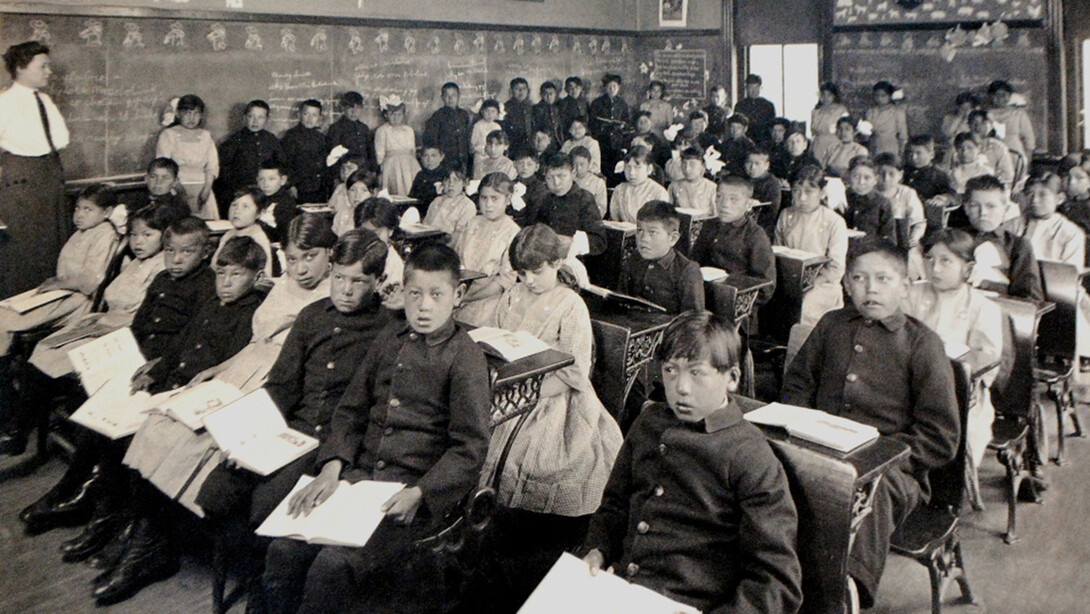
Near the end of the 19th century, the United States Bureau of Indian Affairs decided that the indigenous American people should be assimilated into Euro-American culture.
The best way to do so, they reasoned, was by educating Native American youths in boarding schools, where the students had to use English, were taught Christianity and were called European names. School administrators often tried to force the youths to abandon their culture.
By 1900, more than 150 of these schools had opened with more than 21,000 students enrolled — sometimes through force or coercion.
One of the schools was built in Nebraska. The Genoa Indian Industrial School opened in 1884 and enrolled students from more than 40 Native tribal nations. When the school closed in 1934 — much like the other American Indian boarding schools — little care was taken to keep records and materials together.
Now, through funding from the Council on Library and Information Resources, Margaret Jacobs, professor of history and director of women and gender studies, and Elizabeth Lorang, associate professor of University Libraries, have launched a project to compile, digitize and make accessible records and other materials from the Genoa school. They are working closely with Nancy Carlson and the Genoa U.S. Indian School Foundation in Genoa. The University of Nebraska-Lincoln Center for Digital Research in the Humanities will host the Genoa Indian School Digital Reconciliation Project.
“Genoa was one of the largest American Indian boarding schools,” Jacobs said. “The records are dispersed all over the United States and are very difficult even for a trained historian and archivist to find. We want to recover that history.
“Finding materials that help us to understand and learn from what happened to children in the boarding school and the long-term implications of those experiences, is the first step in a truth and reconciliation project.”
The project presents unique research questions for Jacobs and Lorang.
“Some of the records are of a very sensitive nature,” Jacobs said. “The student files might talk about disease and death or describe the student without the needed context.”
In order to move the project forward with sensitivity and respect, Jacobs and Lorang will work with an advisory council that includes representatives from the Ponca, Pawnee, Omaha and Winnebago nations and UNITE, the university’s Native student group. Honorary co-chairs Judi gaiashkibos, executive director of the Nebraska Commission on Indian Affairs, and James Riding In, associate professor of American Indian studies at Arizona State University, will lead the council.
Lorang said these ethical questions are compelling to her as a digital humanist and that there is an opportunity to build and deploy new strategies of digital presentation to maximize accessibility of the records to ancestors, while respecting privacy in some areas of the research.
“The tradition of scholars studying and libraries collecting information related to Native Americans and other marginalized populations hasn’t always taken into account the people whose lives they’re representing and the materials they’re bringing into the collection,” Lorang said. “We want to work in a different model where the project is driven by the people whose history we’re telling and whose materials will be documented in the project, so the community-building piece is really important.”
Jacobs and Lorang said the grant-funding period begins in June, but efforts to find records and build the community advisory council are ongoing.
Jacobs estimates the initial digitization and website building will take at least four years to complete, but sees it as a longterm project.
“I can envision curriculum development and collecting oral histories and testimonies to go with the documentary record,” she said. “I think there will always be new things to add to it.”
Lorang, Jacobs, Carlson and gaiashkibos will be sharing information about the project during Science Café at 6:30 p.m. March 27 at the Nebraska History Museum, 131 Centennial Mall North.







